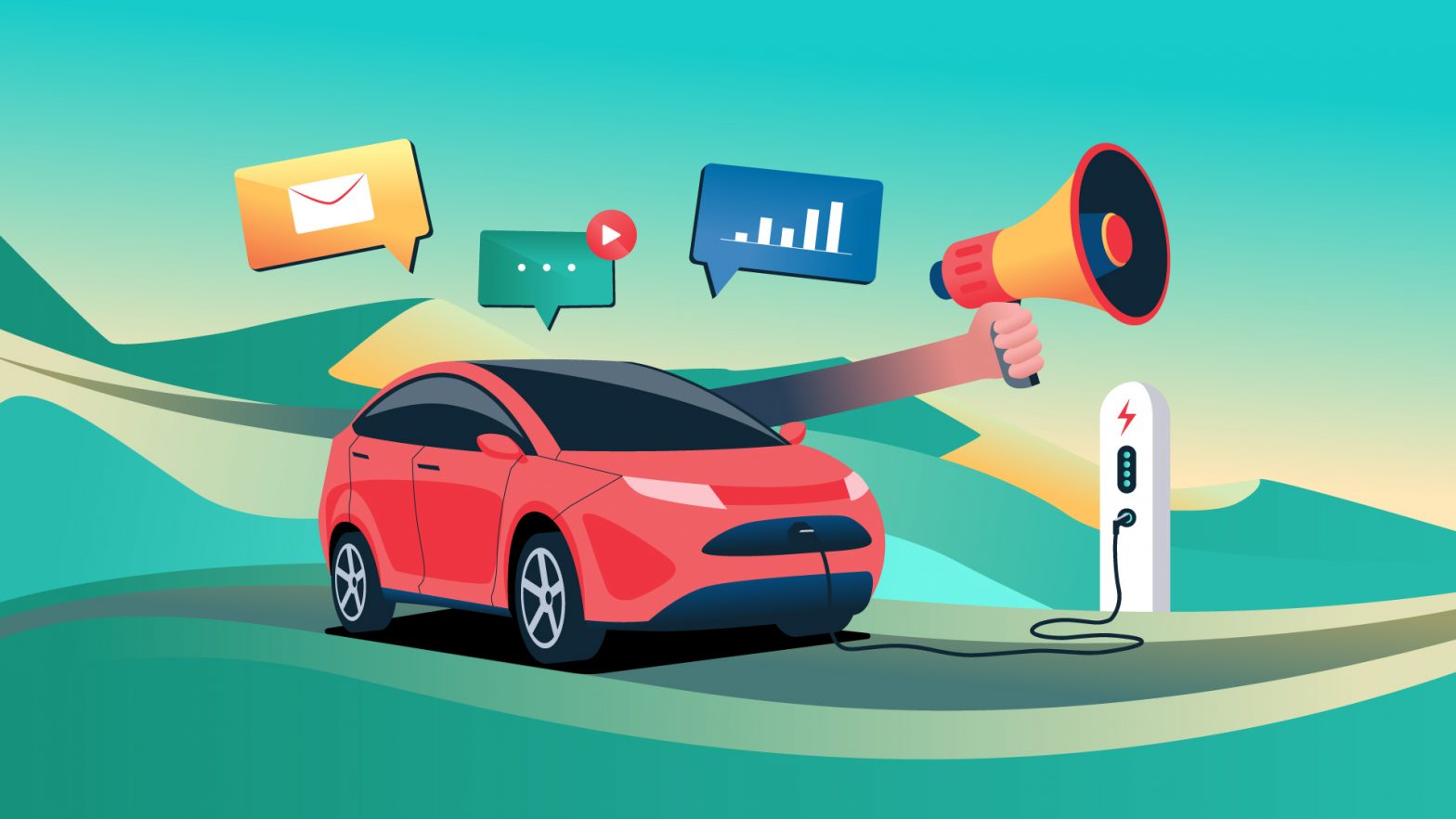Electric vehicle (EVs) marketing is leading us into the future in real life, unlike “The Jetsons,” where flying cars were a sign of the times.
EVs are overturning the market and establishing the bar for the next 100 years of auto innovation, just as gas-powered engines replaced horse-drawn carts a century ago.
In other words, EVs are dominating. In the first half of this year, EV sales in the U.S. increased by 62%, and they currently account for 5% of new car sales.
Although it might seem insignificant, this actually signals a turning point in the acceptance of electric vehicles.
Given that drivers continue to feel the pinch of increasing petrol prices, the transition to EVs may also speed quickly. In fact, worldwide searches for “highest gas mileage” are increasing by 90% per year.
Additionally, around 45% of new automobile sales by 2035 may be electric, according to industry analysts.
These figures have made automakers more aware of EVs. Over $526 billion is being invested in an all-electric future, including the construction of new assembly lines and parts, research into the production and storage of batteries, and planning for shifting tax consequences.
But does their marketing fall into line? Many car marketers continue to use an outdated playbook as they attempt to get EVs into consumers’ hands.
In this article, we’ll talk about how automakers may rethink tired tactics and make their EV marketing as cutting-edge as their cars.
1. Spotting the EV buyer
So how can you create a marketing strategy targeted at EV purchasers when there isn’t a lot of data to guide your choices?
You may begin by creating buyer personas, which are semi-fictional depictions of your ideal client based on market research. These personas are often composed of demographic information as well as information on behavior patterns, motives, and ambitions.
There are three distinct early adopter groups that will make up your target market from the start when I think of EV customer personas.
The Environmentalist:
This persona is deeply concerned about the environment and frequently believes that their individual decisions have a significant impact on society as a whole.
They may not enjoy the conventional car-buying process, but they see EVs as a way to have a significant environmental impact.
Image Source: Canalys
The Reformed Gas Guzzler:
While this persona somewhat resembles The Environmentalist in terms of how significant environmental and climate concerns are.
They are typically more understanding of current EV limitations and aren’t afraid to visit the dealership, indicating that they are prepared to spend now on what is currently available.
The Technologist:
This final early adopter views EVs almost the same as how they view the newest iPhone or technological advancement. Style, technology, performance, and being “first” are important. Although the vehicle’s environmental impact is “neat,” to this persona it serves more as a status symbol.
To be able to start figuring out where these folks could live in your neighborhood, you must first define your buyer personas. Start by drawing a map of the neighborhood that corresponds to the characteristics of early adopters, such as age group, gender, and income range.
Once you have determined which of these you already have a customer base in, review your own sales data history. For further information, you may also look at your district sales report or location report under Google Analytics.
Once you’ve done that, you ought to have a good idea of where potential EV consumers are in your neighborhood, which will help you target your EV marketing plan.
2. Drive action
Seize the already-existing demand. You should be present if consumers are looking for EVs. A small investment is probably all that is required in this case if you are in a developing EV market.
Action Objectives:
Your model and brand terms
For instance: Hyundai hybrid vehicles, Hyundai Ioniq, etc.
Segment keywords – The majority of consumers only have exposure to Tesla and one or two other brands. Get your name and EV inventory in front of customers.
For instance, hybrid SUVs and electric vehicles, Afiscooter C Series (C3 & C4) Mobility Scooters, etc
Allowing your inventory to occupy space at the top of the page using Vehicle Ads.
Perform test searches to comprehend the digital environment for your terms, according to the experts.
Consider the following inquiries for yourself:
- Is there a bid on these conditions? Who if yes?
- Who appears in the organic listings?
- How might a customer locate your auto dealership through an organic search?
- Are there any vehicle advertisements on the page’s top?
3. Increase brand awareness through video
A flood of EVs is on the way, resulting in a crowded market. According to the 2022 Bank of America Merrill Lynch Car Wars research, by 2026, 60% of newly introduced automobiles will be electric or hybrid. Additionally, more models mean more options for car buyers.
Automakers will also have to deal with the reality that EV cars do not have the same amount of brand awareness that gas-powered vehicles do in addition to a crowded market.
This means that in order to be prepared and at the front of consumers’ minds as EV options expand for consumers, automakers must establish brand recognition for new vehicles now.
One method to do this is through video advertisements, which may set a brand’s EV apart from the competition by highlighting its distinctive selling propositions.
In our research, we discovered that 80% of people who bought new cars did something after watching a video, such as looking up more information online, going to a dealer website, setting up a test drive, or establishing personalized requirements for a new car online.
4. Discover interested users in search results
You only need to check online, where EV searches are growing, to realize how great consumer interest in EVs is. Additionally, more in-depth research regarding EVs is being sought after, which may indicate that people are moving further along in the consideration process.
For instance, according to Google Data Global English 2022, more specific searches like “electric car charging station” have increased by 80% while searches for “electric vehicle” have increased by 87% year over year globally. Additionally, searches for “best electric cars 2022” have increased by over 5,000% year over year in the United States.
Conclusion
The world is prepared to switch to electric automobiles to solve boiling environmental concerns and shifting gasoline prices. EVs have benefits beyond the environment as well. They are very inexpensive to run and keep up with.
However, there are a number of obstacles in the way of a successful shift.
The opportunity to invest in EV infrastructure and consumer engagement is presented by the rising demand for EVs. The cost versus benefit analysis, inadequate charging infrastructure, and insufficient drive range caused by limited battery capacity are the main barriers to EV adoption.
These worries may have an adverse effect on potential customers’ buying decisions if they are not handled promptly and appropriately. If you are interested in exploring such content, please go through our blog.








